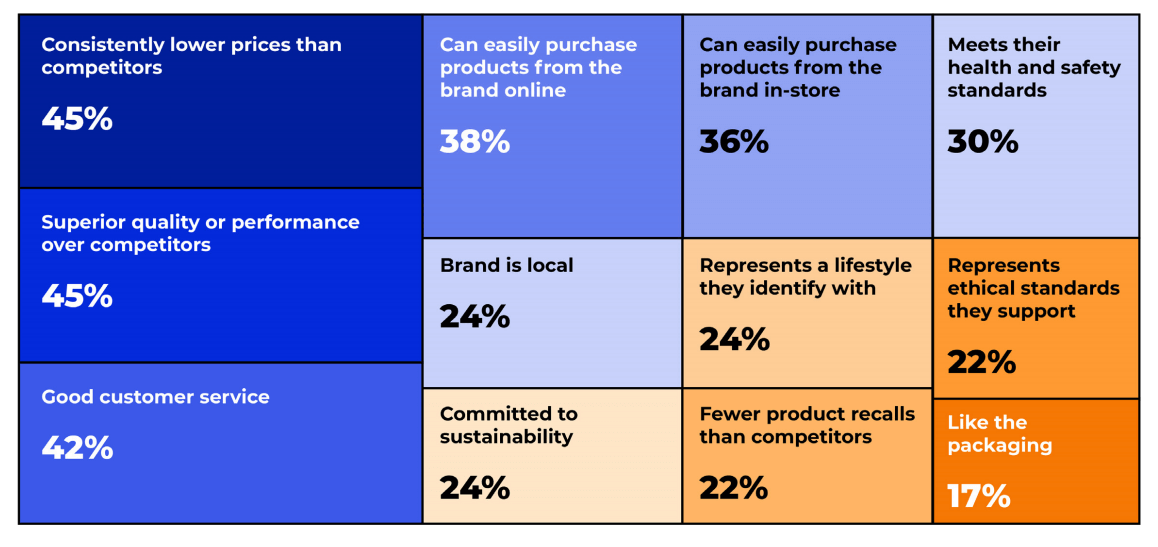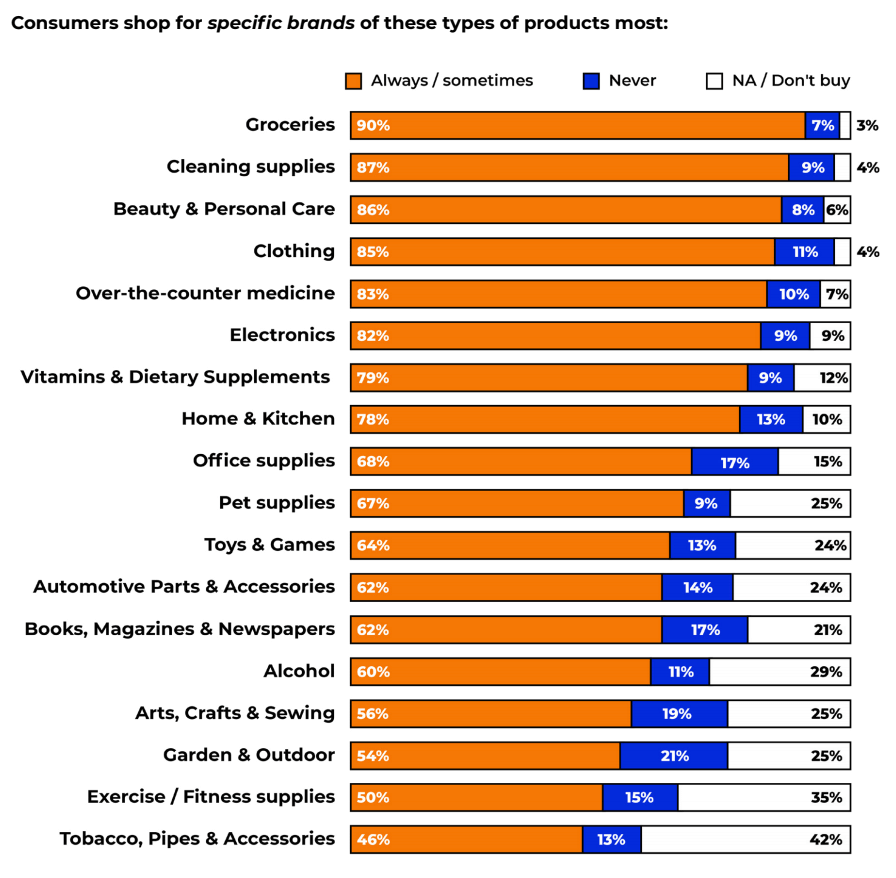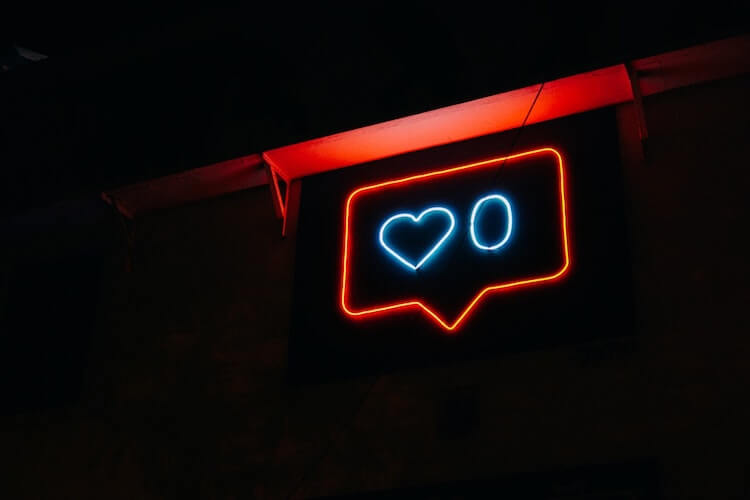54% of consumers consider themselves “brand loyal.” So what exactly motivates consumers to pledge allegiance to a brand?
Jungle Scout recently surveyed 1,000 U.S. consumers to explore the top reasons why they buy from specific brands and how COVID-19 has affected their brand loyalty in certain product categories. We reflect on how the strains of the pandemic economy and the surge of ecommerce have influenced the shopping habits of consumers.
To start, here are the top reasons consumers buy from a brand, ranked by popularity:
Top reasons consumers buy from a certain brand

1. Price
Online consumer preferences run the gamut, but one thing is clear: price is the most motivating factor to go with a specific brand. 45% of consumers choose a brand because it has lower prices than its competitors.
In fact, 70% of consumers are shopping for less expensive products, likely due to financial stressors related to COVID-19 and economic upheaval.
2. Quality
Tied for first place, the most popular reason for brand loyalty is superior product quality and performance over competitors (45%). Shoppers are constantly seeking the sweet spot of where price meets quality, especially with tighter budgets. With customer reviews and price comparisons readily available, shoppers have grown to be more selective.
3. Customer service
42% of shoppers will choose a brand if it has good customer service. In a world of easy online shopping, customers expect a seamless checkout experience, online chat or SMS services (often at all hours of the day and night), and simple refund or exchange processes. Empathizing with and catering to customer needs are important — especially now.
4. Ease of online purchasing
Nearly three-quarters of consumers (73%) believe the majority of consumer shopping will happen online in the future, so it’s not surprising that shoppers want their favorite brands at the touch of a button. 38% of consumers will choose a brand because they can easily purchase their products online.
5. Ease of in-store purchasing
Some consumers favor a more hands-on shopping experience. 36% of consumers choose a brand because its products can be easily purchased in-store. Shoppers want to purchase products they know are consistently in stock.
6. Health and safety standards
30% of consumers purchase from a brand because it meets their health and safety standards. Consumers want peace of mind when they are using a product. They rely on specific, quality products that suit their preferences, whether that’s an item with childproofing, or one made of organic materials, for example.
7. Sustainability
An increasing concern for the environment is also another motivating factor for shoppers. 24% of consumers pick a brand for its commitment to sustainability. From the type of material the product is made out of, to packaging, to a product’s ability to be recycled or repurposed — shoppers want more agency in their ecological footprint.
8. Lifestyle
Consumers like being connected to the brand they buy; 24% of consumers choose a brand because it aligns with their lifestyle. Companies like Red Bull, Lululemon, and Apple sell products and the feeling you get from them. Whether you’re an adventure junkie or tech enthusiast, brands invest time and money in cultivating these personas and targeting consumers with relatable stories.
9. Local appeal
24% of consumers pick a brand because it’s local. As the pandemic threatens to shutter small businesses, some consumers have turned to support brands in their area. Shoppers want their purchases to extend beyond their shopping list and serve as an investment in the community and local economy.
10. Ethical standards
22% of shoppers also stand with a brand for the ethical standards it supports. Nowadays, consumers have greater visibility into a brand’s partnerships, philanthropic ties, and labor conditions. Consumers want to align themselves with brands that act with integrity.
11. Fewer recalls
Product categories like food, cosmetics, toys, and cars are susceptible to getting recalled. 22% of consumers will opt for a brand that has had fewer recalls than its competitors. Recalls are a hassle for consumers — they need to repair or stop using the product altogether and wait for a course of action from the manufacturer.
12. Packaging
Sometimes an eye-catching logo will do the trick. 17% of consumers buy from a brand because they like the brand’s packaging. The simple draw of visual design can be powerful alone to sway a shopper. Brands have aptly used color, labeling, font, and style in packaging as a vehicle for brand aesthetic.
Brand preferences by product category
So are consumers more discerning depending on the kind of product? Yes. Consumers have varying degrees of loyalty to certain product categories.

In today’s age, “next-normal” consumers, or consumers who are defining the current wave of shifting consumer preferences, are turning to larger, more established brands they feel they can trust — holding on to their tried-and-trues. COVID-19 has further established these loyalties, with essential products leading the way for the greatest brand specificity.
The top three product categories that have the strongest brand preference are:
1. Groceries
90% of consumers always or sometimes purchase specific brands for groceries. Shoppers have gotten used to the price point, quality, and flavor of certain products and don’t want to experiment with alternatives. And with the pandemic, dining room restrictions and exposure concerns have many at home and in the kitchen — and people don’t want to make any sacrifices for a meal.
2. Cleaning Supplies
Perhaps due to COVID-19, shoppers have grown to be more selective with cleaning products, often waving off generic products or brands they don’t know. 87% of consumers always or sometimes purchase specific brands for cleaning supplies. Shoppers want to put the health and safety of their households first and will make an effort to buy from a brand they trust.
3. Beauty & Personal Care
At a time when stress is high, shoppers don’t want to disrupt their hygiene routine with inferior products — they want to look and feel their best. 86% of consumers always or sometimes purchase specific brands for beauty and personal care. Some factors of consideration for these products include comfort, quality, and ingredients used.
On the other hand, some product categories weren’t quite as sticky. Check out two of the lowest-ranking categories for brand specificity:
Garden & Outdoor
COVID-19 has called for green thumbs to get outside. 54% of consumers always or sometimes purchase specific brands for garden and outdoor products. Shoppers have more flexibility in this category as these products can get dirty, be affected by the elements, and are stored away from the consumer’s day-to-day view.
Exercise/Fitness Supplies
Although exercise products have seen a sharp increase in sales as people forego gym memberships during COVID-19, consumers are not as particular where they get their equipment. Only 50% always or sometimes purchase specific brands for exercise and fitness supplies. These products are often subject to wear and tear. With more consumers furnishing a home gym, they want to do it for cheap — scrapping expensive brands from their list.
What sellers need to know about brand loyalty today
With the plentiful benefits of online shopping — like lower prices, the opportunity for brand discovery, and free shipping — brands are also having to work to differentiate themselves in a more competitive space.
You can attribute reviews to being an agent of change for brands.
Brand loyalty is ultimately dictated by the voices and actions of consumers. In our digital era, social proof has challenged the traditional idea of brand recognition.
Reviews are changing the way people shop
With the dip of shopping in physical stores (and the lack of tactile experience) due to COVID-19, consumers have gravitated towards the words, pictures, and videos of product reviews to make decisions.
So what does that mean for sellers? You need more reviews — and better ones, too.
In fact, 71% of consumers said they were influenced by the product with the best reviews and ratings, and 68% of consumers said they were influenced by product reviews that contained photos or videos.
Major ecommerce platforms like Amazon are disrupting the definition of loyalty by evening the playing field with reviews. Consumers can afford to be choosy with products because they have so many options.
(See the top 7 reasons consumers leave product reviews.)
68% of consumers say that when they need to purchase a product from a specific brand, they look to see if they can purchase it on Amazon.
The decline of brand loyalty in favor of reviews has significantly shaped what it means for consumers to be consistently buying from certain brands. Now, smaller brands can emerge as key players as long as their reviews are strong and positive.
How you can get more reviews
Here’s what you can do to keep reviews racking in:
- Automate product review requests with Jungle Scout’s Review Automation feature.
- Build keyword-rich listings to rank higher, increasing your chances of landing on the first few pages of search results, and in turn, attracting shoppers.
- Track how your reviews and your competitors’ are performing with Jungle Scout’s Alerts feature.
- Create promotions to encourage purchasing and your customers to leave positive reviews for your product.
In the age of ecommerce and COVID-19, brand loyalty is quickly evolving. Consumers have a variety of motivations for buying from certain brands, with different levels of loyalty for certain product categories, as their priorities shift with time. As online shopping continues to be the default during the pandemic, the influence of reviews is catching up to the power of brands — changing the way consumers behave and buy.

 1 Comment
1 Comment
One comment on “Brand Loyalty in the Age of Ecommerce & COVID-19”